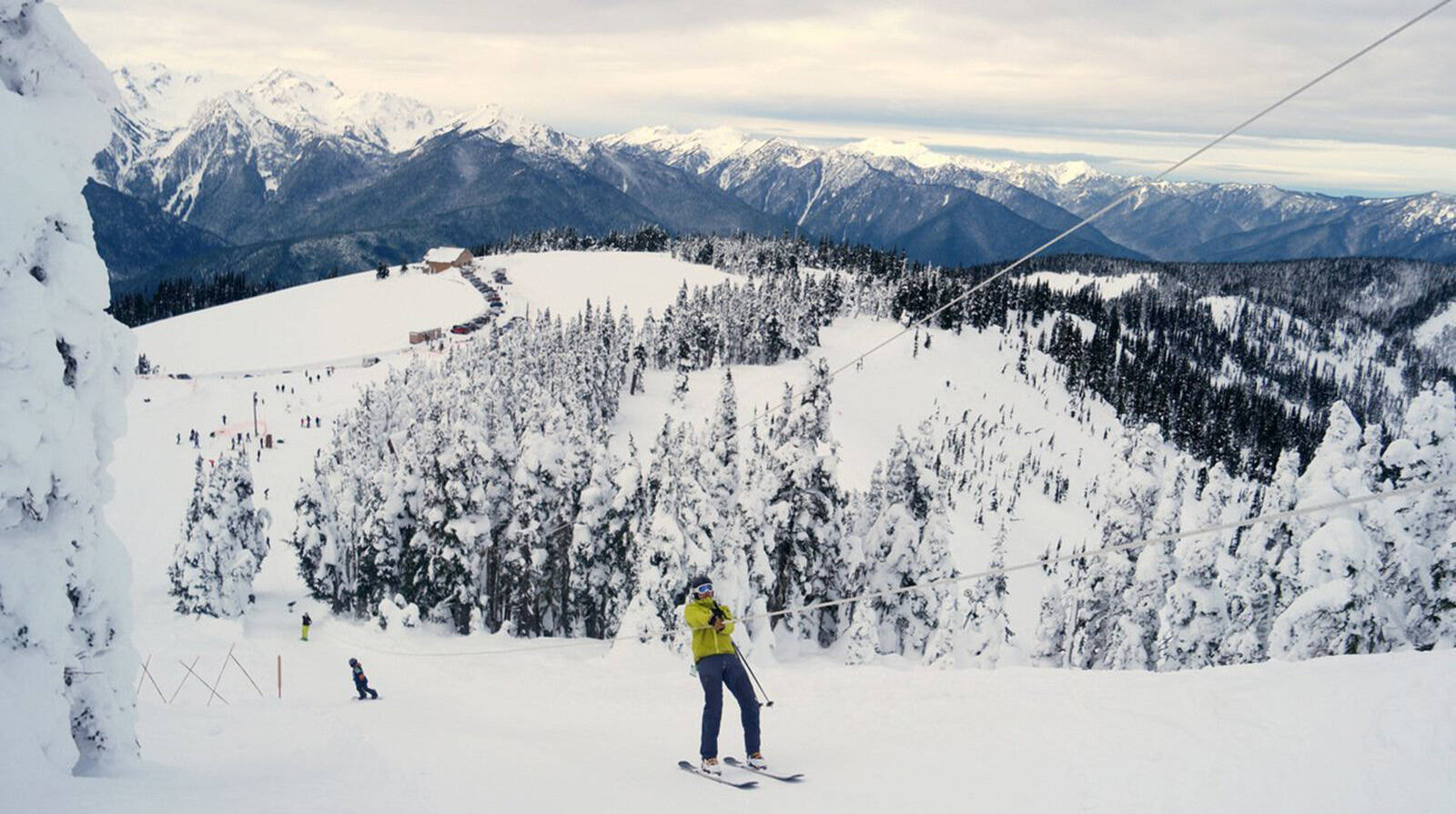Hotter summers and wetter winters spell a precarious future for glaciers in the Pacific Northwest.
This is especially true for those in low elevations, so much that, according to new research published last month, glaciers on the Olympic Peninsula could largely disappear by 2070.
While glaciers come in all shapes and sizes — and those at higher elevations are generally less affected by warming temperatures — the losses predicted in the study carry heavy implications for the region’s ecology, geography and climate as the planet continues to warm due to fossil fuel emissions.
The report, which was published in April in the Journal of Geophysical Research Earth Surface, relied on a combination of field observations, aerial photographs, maps and inventories to assess how glaciers have changed since the early 1980s and, beyond that, how they’ve reacted to environmental changes since they were first photographed by the U.S. Army in 1980.
“These glaciers — all glaciers — affect high alpine water resources,” said Andrew Fountain, the report’s lead author and a professor of geology and geography at Portland State University. “Meaning the glaciers act as frozen reservoirs of water that release their water when we need it the most, and that’s during the hot, dry parts of the summer.”
Natural ecosystems depend heavily on that cycle.
A glacier can “disappear” when it ceases to move, at which point it will stop being classified as a glacier and become an ice patch or a perennial snowfield. This could be the future of several glaciers on the Olympic Peninsula, Fountain said, as they shrink and retreat into “niches in the landscape” protected by cold air and shade.
Located on the western peninsula of the state, Olympic National Park is home to the Olympic Mountains and approximately 200 glaciers. About half of its glacial area has disappeared since 1900. More recently, the peninsula has lost 35 glaciers and 16 perennial snowfields since 1980.
Washington is the second most glaciated state in the country with about 173 square miles of glaciers, perennial snow and other ice features. Alaska leads the country with a breathtaking 3,474 square miles, while Wyoming comes in third with just under 29 square miles.
The recent study is one part of a growing understanding of the effect climate change is having on the glaciology of the Puget Sound region, whose hills were shaped in large part by an ice sheet a mile thick during the last ice age.
Washington State Climatologist Nick Bond pointed out that what’s happening or will happen with low-elevation glaciers does not necessarily foreshadow what could happen with those at high elevations.
At just under 8,000 feet, Mount Olympus is the highest point in the Olympic Mountains, whereas the volcanic peaks of the Cascades soar well beyond 14,000 feet.
In theory, glaciers at higher elevation will outlast their low-lying counterparts.
“We are anticipating wetter winters,” he said. “In some places that will mean more snow.”
Snow that could eventually be compressed into glacial ice.
But the implications of melting glaciers are many, Bond said.
The surface area of glacial and perennial ice has declined significantly over the past century in most parts of the state. Such ice features have shrunk by nearly 40 percent on Mount Rainier between 1896 and 2015. Glacial loss since 1900 has reached about 56 percent in the North Cascades.
Warmer temperatures compounded by decreasing precipitation could upset the seasonal cycle during which, traditionally, glaciers retreat during the summer and recover in the winter.
Smaller glaciers mean less stream flow, which could then lead to increases in water temperatures. Warming waters are perilous for aquatic habitats and the forms of life that depend on them.
Loss of glacial ice can also lead to more erosion and alter stream flows, which together can release large amounts of sediment into the watershed. While not all sediment is bad, this can make it difficult for salmon, trout and other aquatic creatures to hunt, hide or spawn offspring.
Attempts have been made to develop technology to delay or prevent glacial melting, like using reflective materials to protect the ice from the sun, or constructing ice stupas, which are frozen, vertical structures that allow water to be stored longer and in dryer places. But these are temporary solutions that don’t address the underlying cause of glacial melting, Fountain said.
“I don’t see any way to save the glaciers unless we begin to eliminate fossil fuels,” he said. “What we’re seeing here is part of the consistent story with climate change.”


